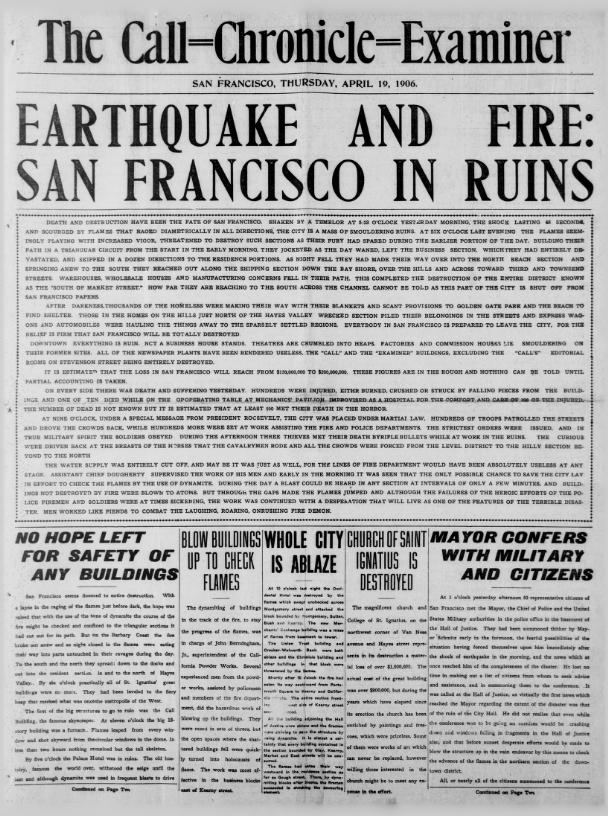Media-watchers are interpreting yesterday’s horrifying Audit Bureau of Circulation audit numbers that show newspaper circulation falling at an accelerating rate. Alan Mutter takes calculator in hand and figures that readership is at historic lows. “Newspaper circulation now is lower than the 41.1 million papers sold in 1940, the earliest date for which records are published,” he writes. In those days about 31 percent of the population read a newspaper. Today, it’s less than 13%.
Mutter’s analysis draws quite a few comments, several of whom quibble with his math. Martin Langeveld cites figures that are even more alarming than Mutter’s: In 1940, publishers distributed 118 newspaper copies for every 100 households. Today, the equivalent number is 33 copies per 100 households, down from 53 per 100 less than a decade ago.
Writing in the Atlantic, Megan McArdle chooses a blunt headline for her analysis: “This is the End of the Newspaper Business.” In her view, publishers are now at the end of their ropes. They’ve cut all they can cut and still put out a respectable product. The industry is in a death spiral. “We’re eventually going to end up with a few national papers, [most likely] The Wall Street Journal, the Washington Post, and The New York Times…But in 25 years, will any of them still be printing their product on the pulped up remains of dead trees? It doesn’t seem all that likely.”
McArdle’s predictions sound eerily similar to what we wrote more than three years ago in an essay entitled “How the Coming Newspaper Industry Collapse Will Reinvent Journalism.” We picked the same three dailies to survive but gave print only about 15 more years. We tried to place the essay in a few big dailies at the time but were rejected. Too implausible, the editors said.
In a release that served as a preamble to the ABC numbers, the Newspaper Association of America (NAA) provided some context for the circulation plunge. Its latest numbers reveal the impact of publishers’ recent efforts to tighten up on circulation in order to reduce churn and acquisition costs. As a result, newspapers are seeing “higher levels of subscribers retaining subscriptions, with subscriber ‘churn’ falling dramatically to 31.8 percent in 2008, compared with 54.5 percent in 2000.” Publishers are also raising single-copy rates and discounting more aggressively for subscriptions.
The NAA’s analysis is an important counterpoint to the hand-wringing that’s going on over the ABC numbers. At least part of the decline in US circulation is intentional. Publishers are cutting back on free distribution and deeply discounted promotions in an effort to make circulation a profit center. That’s good business sense, although it’s hardly a long-term strategy.
Miscellany
More local weeklies are closing.
- Oklahoma’s Midwest City Sun will shut down this week after nearly three decades, idling 10 employees.
- The Shoreline/Lake Forest Park (Wash.) Enterprise will print its last edition tomorrow and four other weeklies in the area will be combined into a single edition, appropriately named publisher Allen Funk announced. Enterprise features Andrea Miller editor puts the loss in human terms. “This leaves more than 65,000 people in north King County without a newspaper devoted solely to coverage of the communities they live in,” she wrote in a thoughtful e-mail to us. The Enterprise has be around more than 50 years and its lineage actually stretches back to 1904, she wrote in a 2007 history.
Last night was the American television debut of Stop The Presses: the American Newspaper in Peril, a 2008 film that claims to be the only documentary about the industry’s downfall. Directors Mark Birnbaum and Manny Mendoza interviewed “reporters, editors, media critics, journalism professors, students and newspaper readers to document the historic role of newspaper journalists as public watchdogs.” They also talked to many journalists like Ben Bradlee and Ken Auletta. It appears that the filmmakers are going to let their work trickle out through localized TV showings over the next year. You can buy a copy at prices ranging from $25 to $250 at AMS Pictures. Now that the vid has appeared on television, it will no doubt pop up online somewhere, but we would never point to a pirated copy. Just who do you think we are? Commenters are another story.
And Finally…
If you’re a newspaper history buff, have we got websites for you. Life just published a collection of classic photos involving newspapers under the banner of When Newspapers Mattered. It includes gems like the image below of Los Angeles gangster Mickey Cohen sitting amidst the newspaper headlines that galvanized his reputation as the kingpin of crime. Cohen and the Los Angeles media enjoyed a mutually beneficial relationship, as he sold a lot of newspapers. He and William Randolph Hearst were reportedly pals.
The Library of Congress is now also offering free access to a searchable database of dozens of daily newspapers stretching back to 1880. The service is part of National Digital Newspaper Program, a partnership between the National Endowments for the Humanities, the Library of Congress, and state projects “to provide enhanced access to United States newspapers published between 1836 and 1922.” Nearly 1.5 million pages have already been scanned. It’s unclear how exhaustively they’ve been indexed, but news buffs can view images like the front page from the San Francisco Call-Chronicle-Examiner documenting the earthquake of 1906 (below).
Comments
This entry was posted on Tuesday, October 27th, 2009 at 7:53 am and is filed under Facebook, Paywalls, Solutions. You can follow any responses to this entry through the RSS 2.0 feed. Both comments and pings are currently closed.





The link given for “Stop The Presses</i" should by this
I do wish the papers would stop whining and wringing their hands about democracy not being possible without the press.
Nazi Germany used the power of the press too.
Are you saying that Auschwitz, Bergen-Belsen and all the rest would have been impossible if Germany had used printing presses? I didn’t think so.
The Nazis understood the power of the press for promoting their agenda and suppressed the Hell out of anyone else’s presses.
The printing press is a morality-neutral 1:N broadcasting technology whose time has passed as its role has been entirely subsumed by the N:M internet.
Its dying as more and more of our communications take place on the internet without the need for senseless arboricide.
Its also dying as the network effect takes wider and wider hold and enables conversations, instead of trying to get increasingly deaf ears to listen to the shouts of the “Global Village Idiots.”
The arrival of the internet to Africa will do more to liberate the people that all those endless intercine wars against all those Mugabe-wannabes.
Paul, thanks for mentioning my comment at Newsosaur – I have expanded on those thoughts also at Nieman Lab.
And, the Atlantic link should go here.
For an opposing viewpoint, there’s this piece from Barron’s called “This Dying Medium has Plenty of Life.” It focuses on the continued profitability of newspapers while ignoring the fact that they are shrinking themselves into oblivion.
Thanks for correcting the URLs. WordPress had a touch of flu this morning, it seems. Never seen that weirdness before.
Circulation “churn” requires that there be more that one news source.
On the internet, its easy.
With traditional media, the barrier to entry is too high.
Hi Paul:
It’s hard to put a positive spin on the numbers. They were dreadful. My own hometown paper the Boston Globe once boasted a daily circulation of more than 500,000 and now is at 264,000. That’s quite a plunge in less than a decade. But thanks for putting this collection of links together – I had missed a few of them.
[…] (read more) […]